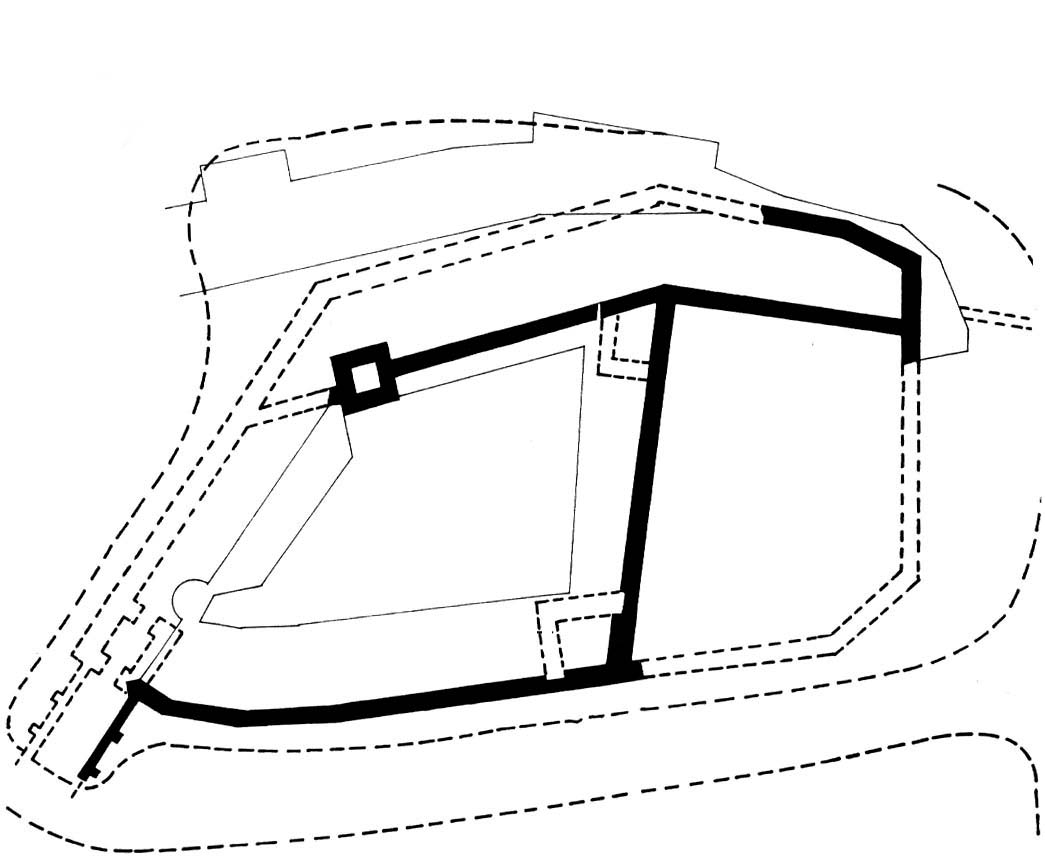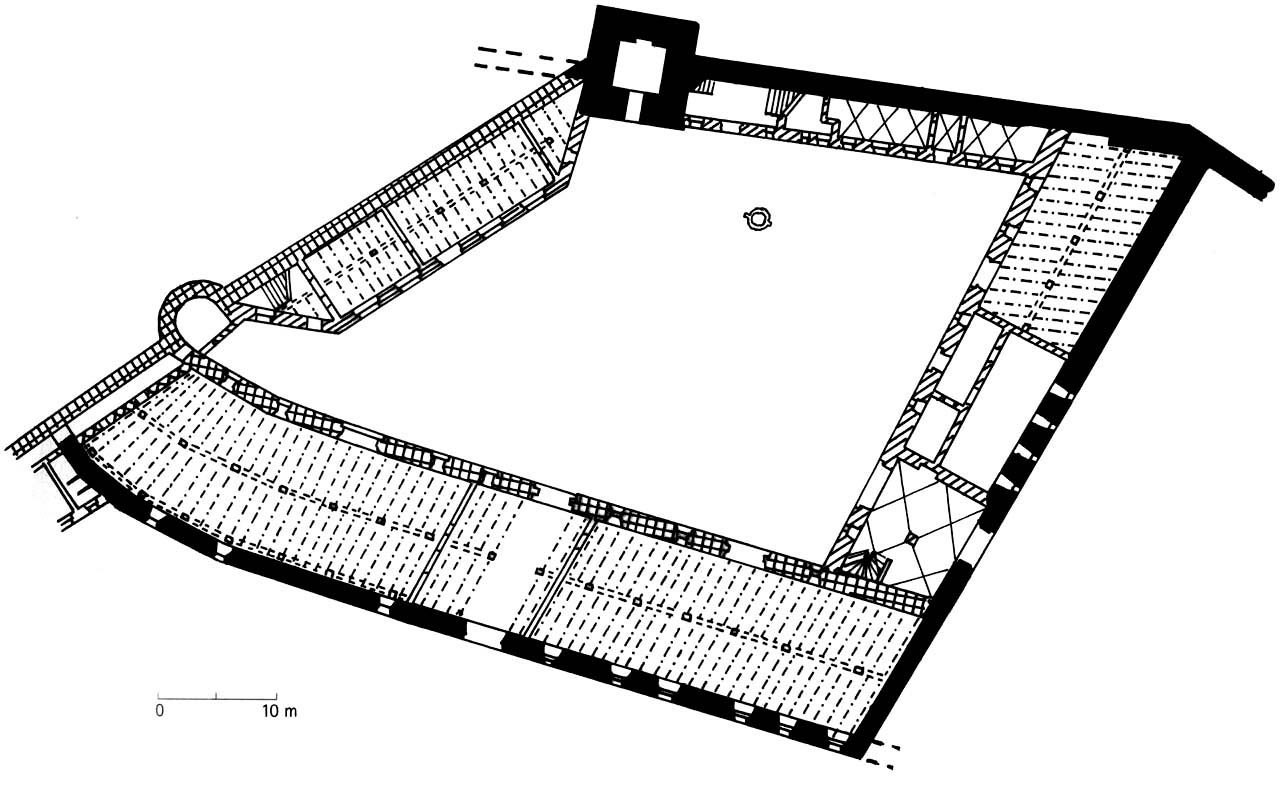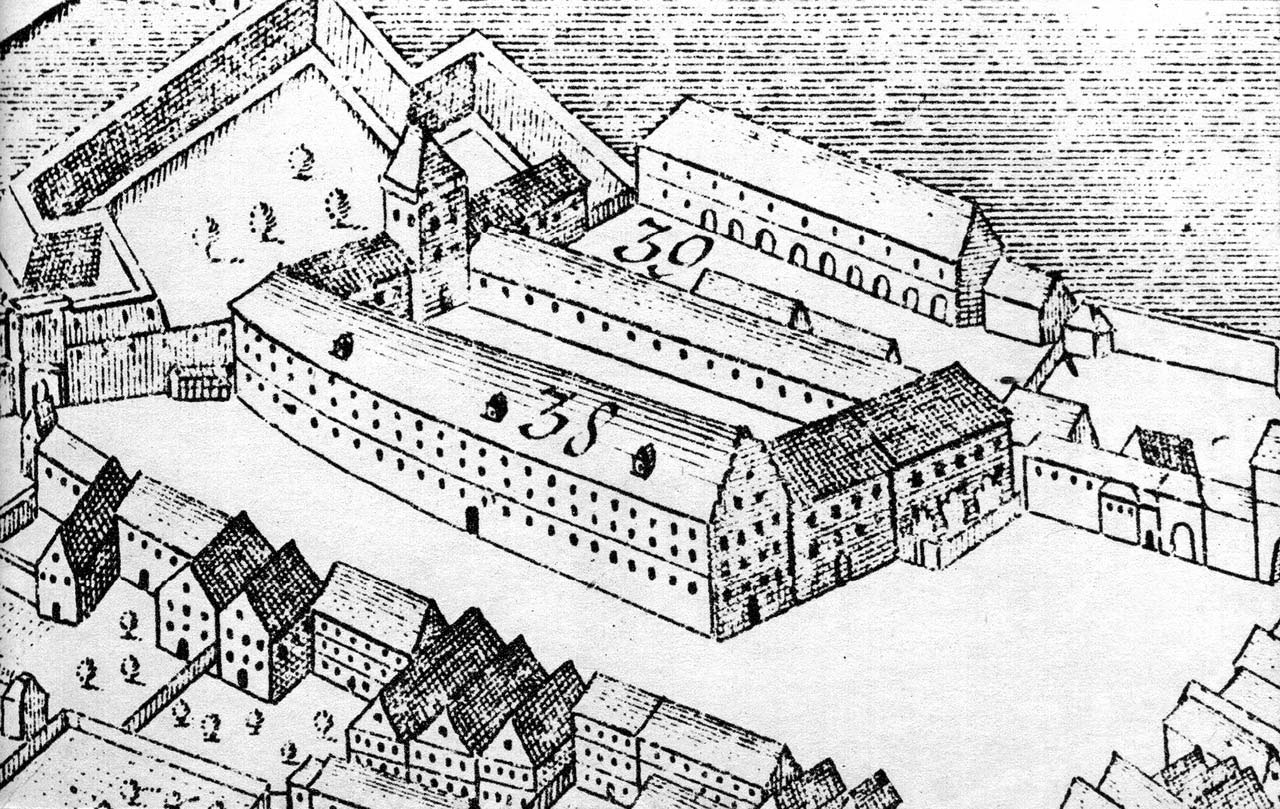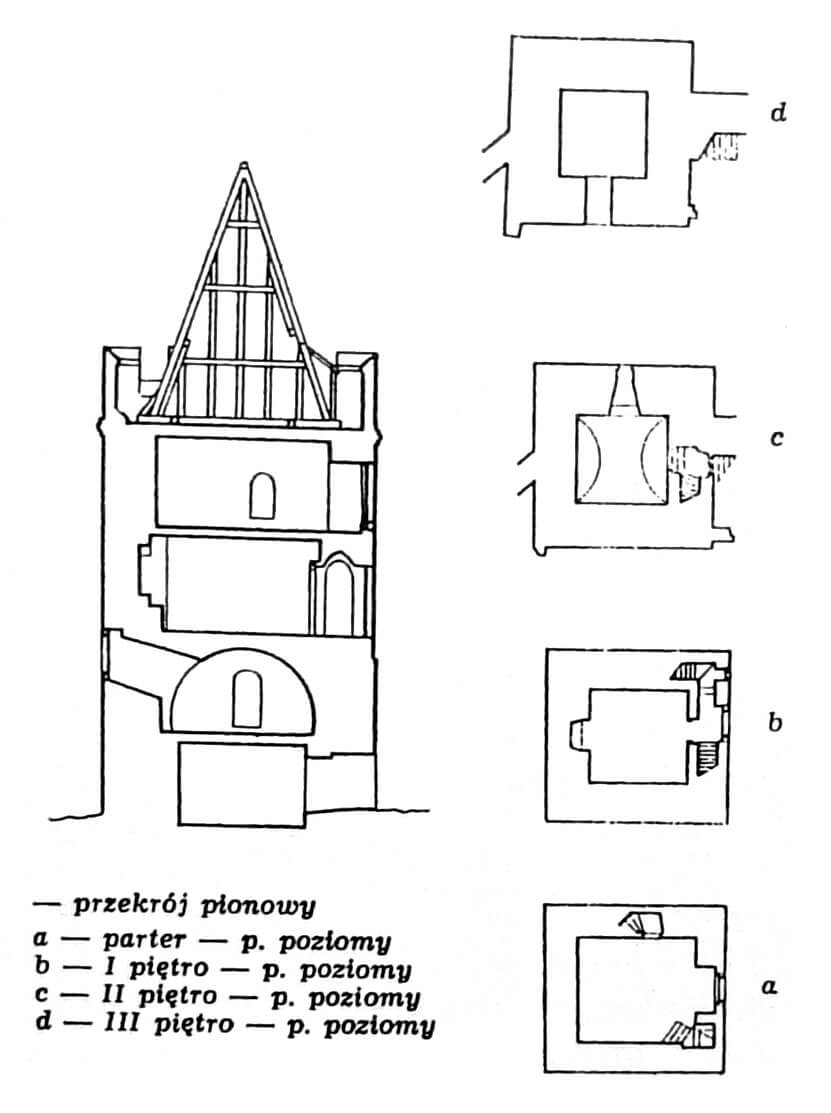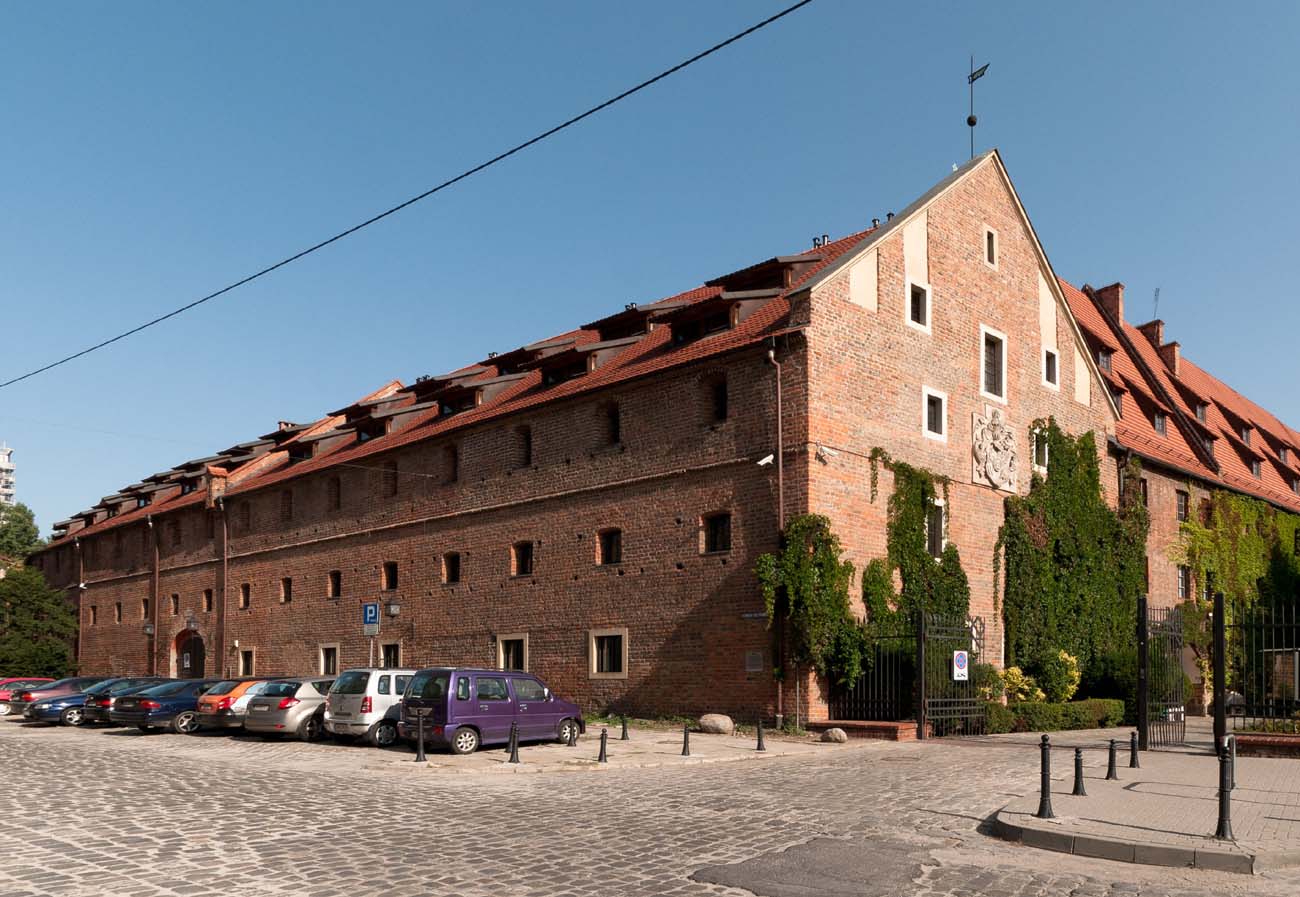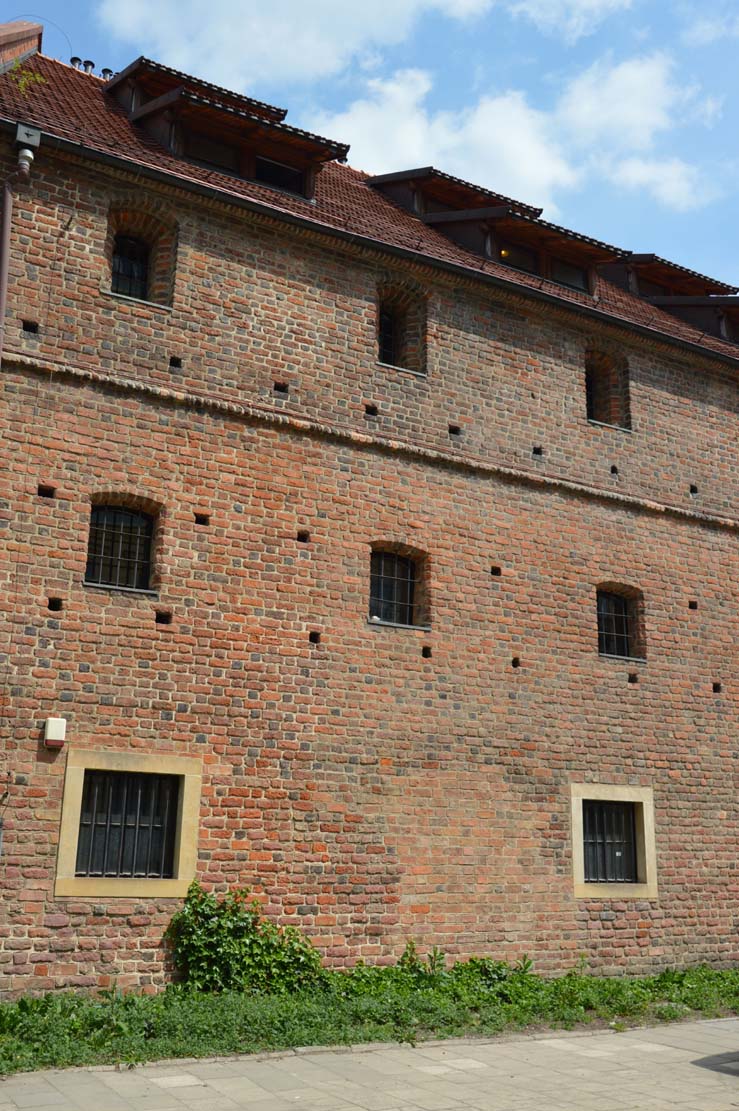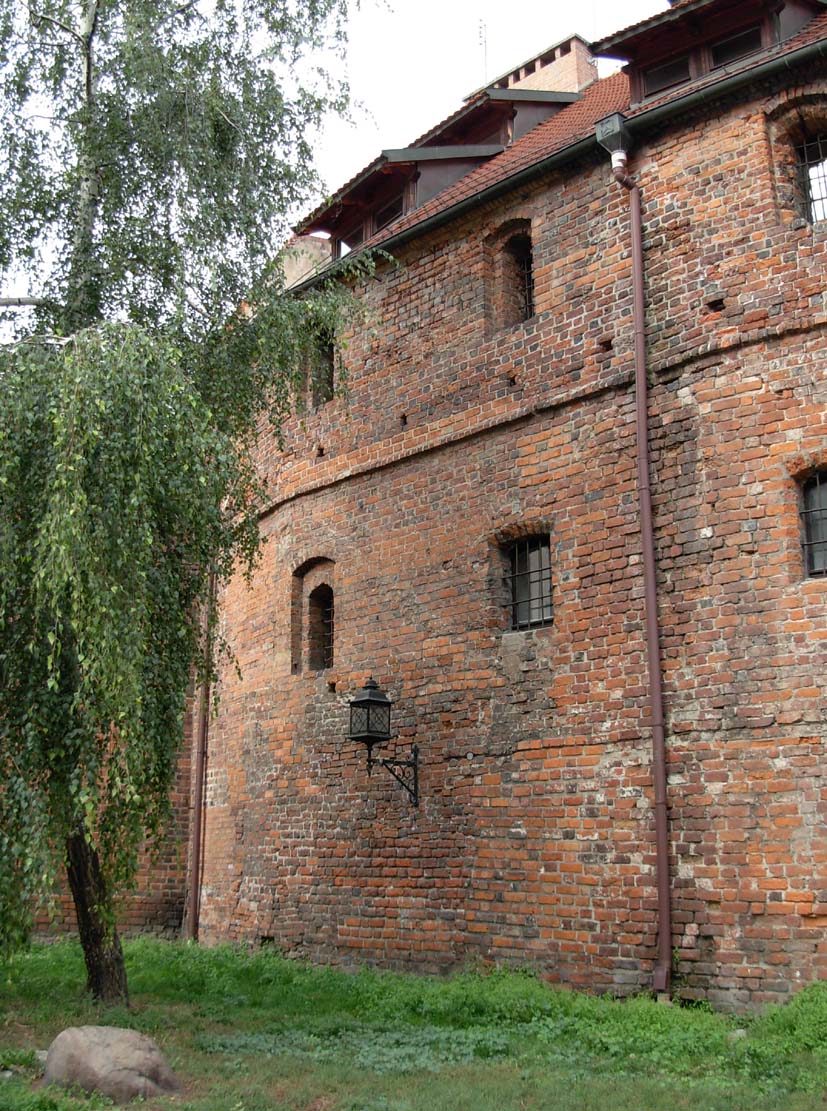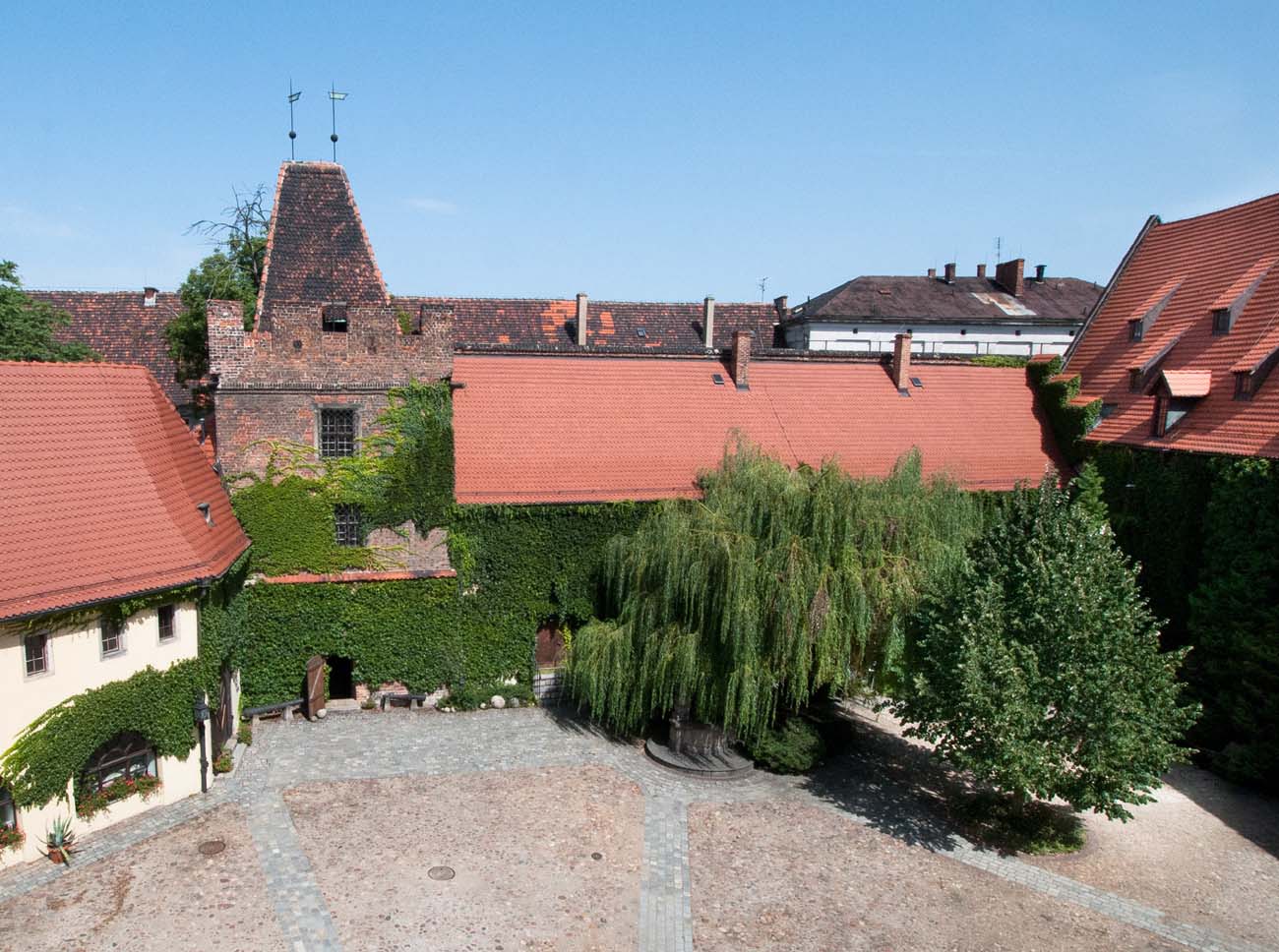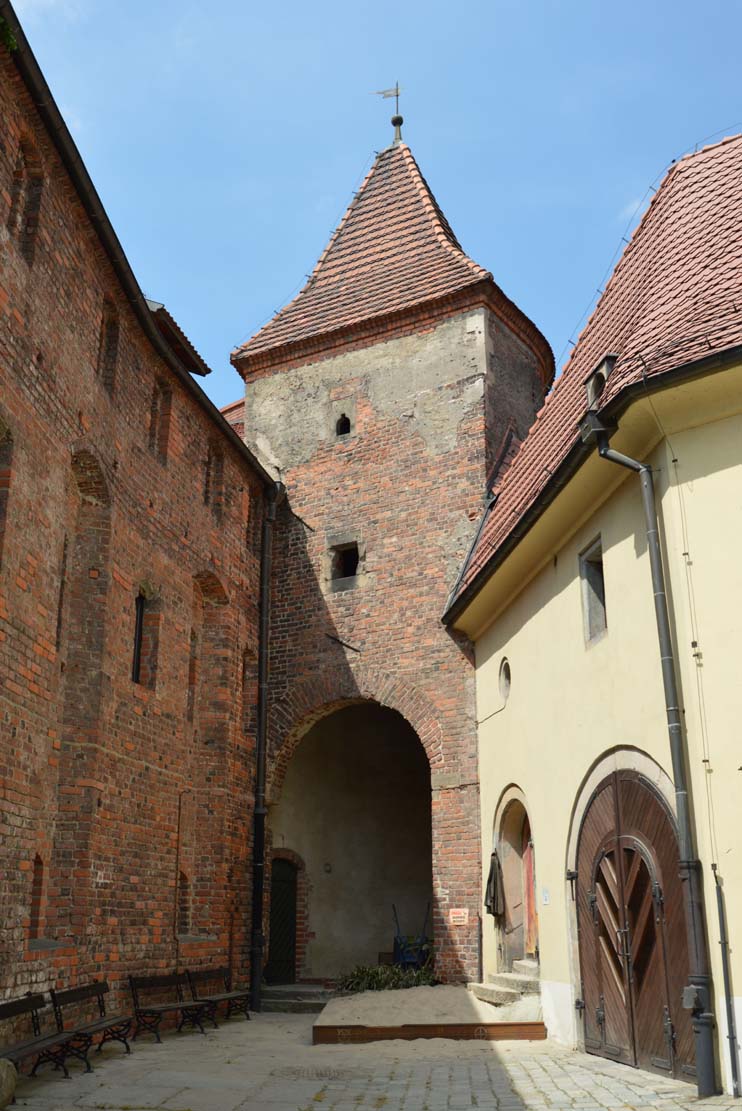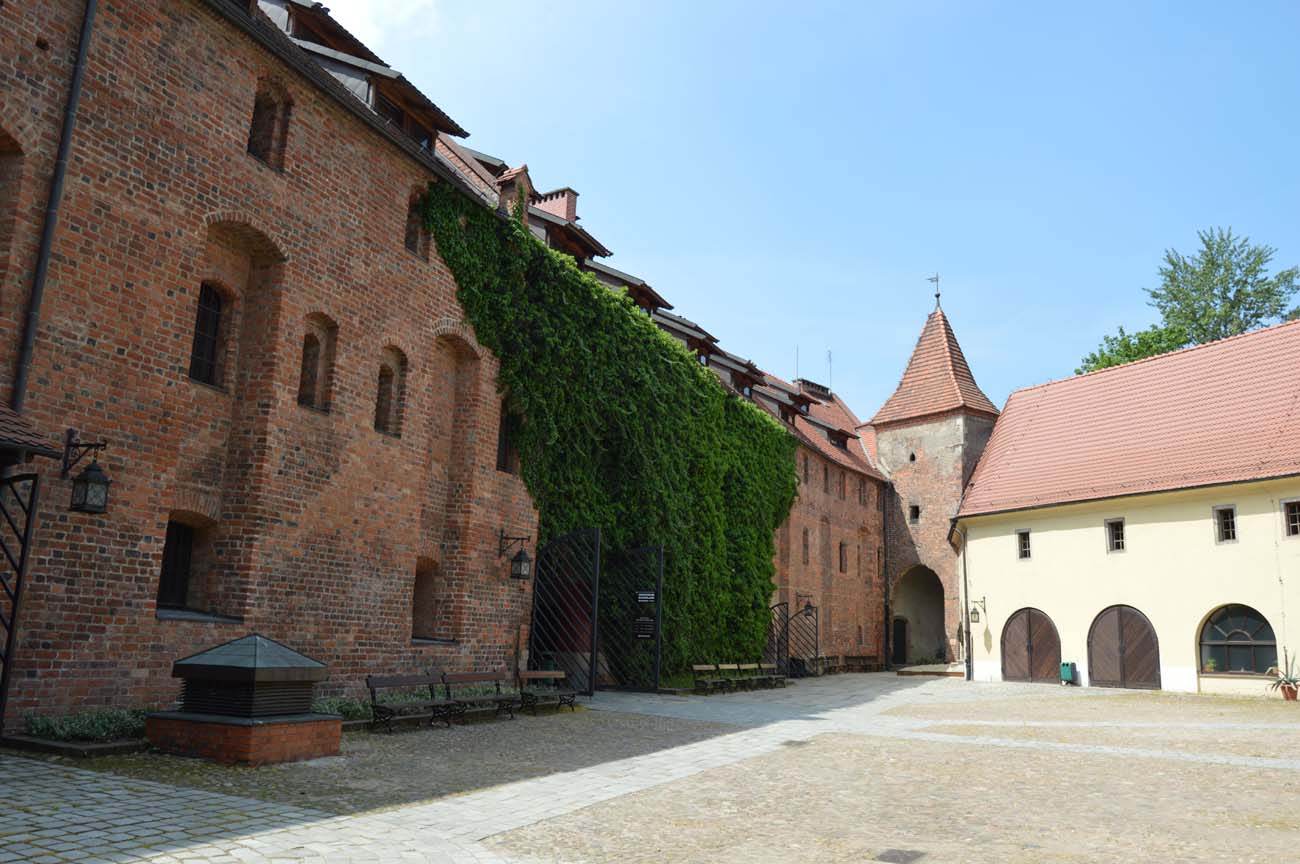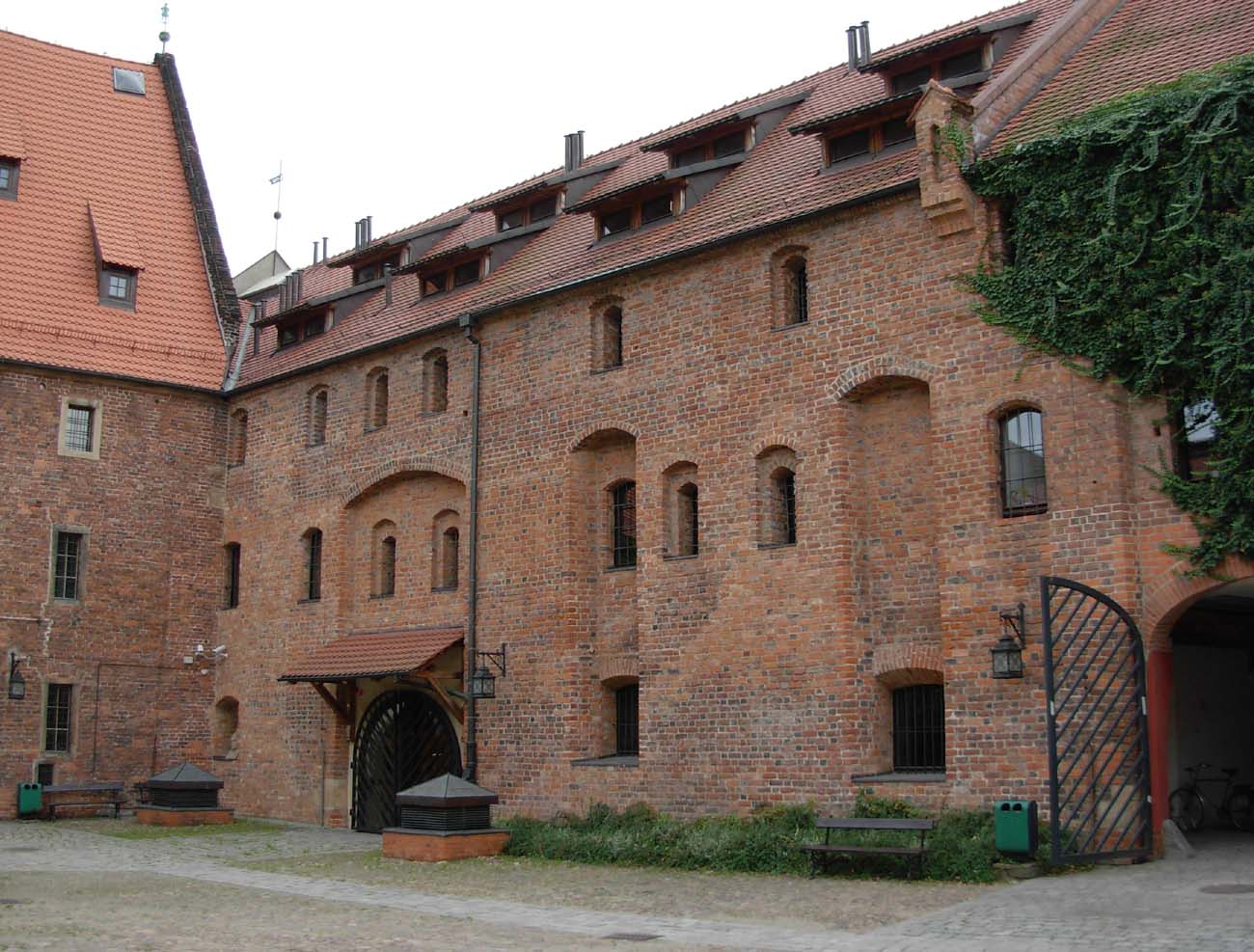History
In the years 1270-1290, the Silesian prince Henry IV on the site of the later arsenal began the construction of a brick castle, which was then outside the city walls of Wrocław. The construction was not completed, probably due to the excessive loads of the prince’s treasury, from which funds had already been spent on the modernization of the castle on Ostrów Tumski. Probably the greater part of the castle did not rise above the foundations, however, the buildings that were built were used in the fourteenth century for the seat of the vogts. In the fifteenth century, the surrounding area was used to organize horse races, knights’ tournaments and drill exercise. Nearby, but outside the city walls, there was also a firing range of the Wrocław firing brotherhood.
In 1459, a municipal granary was built on the site of the former castle to collect and store grain in the event of a siege of the city. This was caused by the threat of attack by the troops of king George from Podebrady, to whom Wrocław refused to pay homage. At the same time, the city council noticed that there were not enough grains in the city in the possession of secular and clerical people, as well as in all mills and private granaries. The available resources would be enough for only eight days of siege. In this situation, it was decided to bring grain from Poland and store it in the new municipal granary.
The benefits of having a granary appeared in 1472, when due to the high prices of food products, many burghers were unable to afford food. This crisis included not only Silesia, but also Moravia, Czech, Lusatia and Poland. Counteracting the famine, the Wrocław councilors decided to sell the stores stored in the granary at minimum prices, thanks to which many townspeople managed to survive a tough period.
Since the 16th century, the stack of the weapon was moved to the granary, from the cellars of the town hall, market square and the city walls. It was started to be called zeughaus and among others guns, cannonballs, firearms, and other weapons were kept in it. The list of firearms from 1483 informs us about the amount of weapons that Wrocław had: 742 handguns and 107 cannons, located on various sections of the city walls. Within the courtyard, between the granary and the fourteenth-century walls, other objects were gradually built: a coach-house, a forge and a gun-house. No gunpowder was stored in the cekhauz, which was kept in a specially built for this purpose tower. In 1547, in the town’s arsenal, 42 cannons were stored with a stock of 4286 stone cannonballs, 51 smaller caliber guns with a reserve of 13875 iron cannonballs, and moreover, hand-held firearms: 86 double hand cannons, 135 half-hand cannons and 238 fuse hand cannons. Equally impressive was the stock of pole weapons: 126 halberds, 1633 pikes (but 564 of them were in disrepair), 452 spears, 262 lances and unknown number of shields.
A significant extension of the arsenal to an early modern military warehouse took place in the 18th century when, by the decision of the prussian king Frederick II, Wrocław became a stronghold. At that time, a four-storey building erected in the classicist style was built in the eastern part, which western wall was the eastern elevation of the old arsenal. As a result of war activities of 1945, the Fredericks warehouse was significantly damaged and was demolished in the post-war period. The old arsenal itself, on the other hand, happily avoid more serious damages and was renovated for the purpose of the museum.
Architecture
The castle preceding the arsenal was laid out in the form of an irregular quadrilateral. The entrance was likely lead through the tower in the south-west corner, located in the north-east of the city, which was incorporated into Wrocław after the expansion of the defensive circuit in the first half of the 14th century. From the north and east there was an additional, external defensive circuit of walls with zwinger.
The arsenal had the outline of a quadrilateral 73 x 55 meters with a courtyard, in the middle of which there was a well. Such a system was created gradually by adding further wings. The oldest is the southern wing erected in 1459 (72 meters long, 1.5 meters thick walls), the northern range was completed around 1490 (30 meters long and 3.5 meters wide), the western one was built in 1570 (33 meters long and 6 meters width), and eastern only in the seventeenth century. The western wing was added to the old defensive wall in such a way that its defensive porch set the level of the highest storey of building (attic). It was covered with a gable roof with a larger slope facing the inner courtyard. The attic part was divided into two levels.
In addition to the four wings, the entire structure also had two towers. The four-sided north tower is the remains of the 14th century second line of the city’s defensive walls. Its height with the roof is 20.5 meters (14.5 meters up to battlement). It has four floors erected on a plan similar to a square with dimensions of 8.5 x 8.9 meters. The three lower had barrel vaults, the highest one was topped with a flat wooden ceiling; from it also leads a narrow passage to the crown of the defensive wall. Tower walls, 2.5 to 2.7 meters thick, had arrowslits, later converted into windows. The second tower, half-rounded, open to the inside with a large arcade, has a height of 13 meters. In its western (outer) wall, five circular arrowslits were made of sandstone. The walls of the towers reach up to 1.3 meters thick. To the east of the arsenal were two more towers. The closer one was the wicket gate leading to Odra River. The next tower stood on the place where the 13th century perimeter of the city walls was once finished and the enlarged ring of the 14th-century fortifications began. Between these towers, Black Oława River was coming into the Odra River, which riverbed was originally a city moat.
The height of the defensive wall, originally not curtained by buildings from the north and west, ranged from 7.5 to 8 meters, and the thickness was over 2 meters. In the breastwork of the wall there were shooting holes, formed by enclosing 90 cm intervals between merlons of the battlements in the fifteenth century. The defenders moved along the roofed, wooden porch protruding from the inside face of the wall.
Current state
The Arsenal is currently a branch of the Wrocław Municipal Museum. In the north and east wing there is the Museum of Military, in the old granary since 2001 is located the Archaeological Museum and Museum of Architecture. In the quadrilateral tower is located the seat of the Brotherhood of the City of Wroclaw. The Arsenal is also a venue for many cultural events. Hours and opening times can be found on the website here.
bibliography:
Architektura gotycka w Polsce, red. M.Arszyński, T.Mroczko, Warszawa 1995.
Burak M., Arsenał wrocławski, Wrocław 2012.
Leksykon zamków w Polsce, red. L.Kajzer, Warszawa 2003.
Przyłęcki M., Budowle i zespoły obronne na Śląsku, Warszawa 1998.

